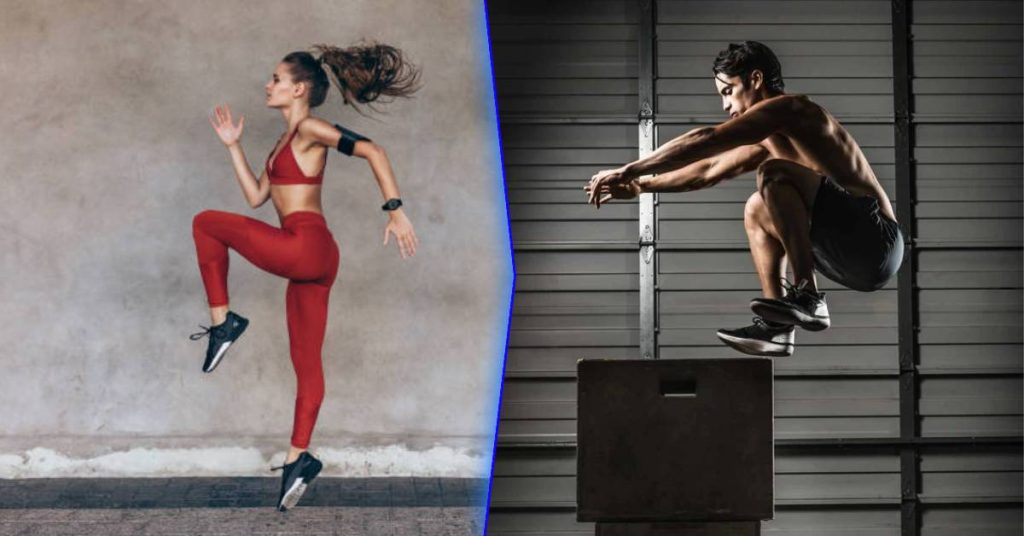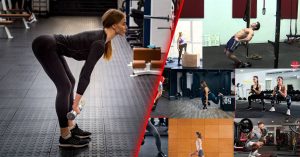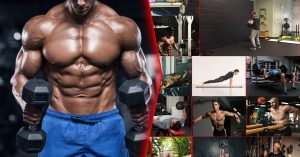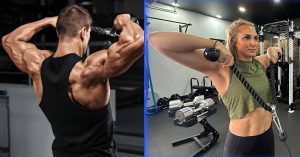Have you ever stopped to think about what truly transforms a regular leg day into an unforgettable, muscle-building journey? The secret might just surprise you: it’s the unique combination of cardio leg workout and strength exercises.
A cardio leg workout, when executed correctly, has the power to significantly enhance muscle endurance and strength. Now, you might be wondering, how can something typically associated with heart health and weight loss transform into a muscle-building powerhouse? Read on as we unveil the details.
Table of contents
MORE keyboard_double_arrow_down LESS keyboard_double_arrow_up
The Role of Cardio Leg Workouts
Cardiovascular exercise is renowned for its numerous health benefits, including improved heart health and fat loss. However, its potential to aid in muscle growth, particularly in the legs, is often underappreciated.
By incorporating cardio after a leg workout, you’re not just burning extra calories; you’re setting the stage for enhanced muscle recovery and growth. This approach defies the conventional wisdom that often separates cardio and strength training into distinct categories. But how exactly does combining these two methods reshape the narrative around building leg muscles?
- Enhanced Blood Flow: Cardio increases blood circulation, delivering more nutrients and oxygen to your muscles.
- Improved Recovery: Surprisingly, light cardio can aid in recovery by reducing muscle soreness.
- Increased Endurance: Integrating cardio means your muscles can withstand more.
The interplay between cardio and strength training creates a synergistic effect that propels leg muscle development to new heights. Yet, this concept remains one of the fitness industry’s best-kept secrets.
As we dive deeper into the mechanics of a cardio leg workout, it becomes clear that the benefits extend far beyond mere endurance and calorie burn. This dual approach not only challenges the traditional workout paradigm but also opens up a new realm of possibilities for muscle growth and performance enhancement.
Is Cardio Good for Leg Workout?
Without a doubt, the answer is a resounding yes. The trick lies in masterfully combining high-intensity leg exercises with cardio workouts. This powerful blend aims at multiple muscle groups at once, pushing them beyond their comfort zones. But why does this approach work so well? And how does it differ from the cardio routines we’re all familiar with?
High-Intensity Impact workouts represent a departure from leisurely activities, aiming instead to elevate heart rate and induce muscle fatigue. These sessions, characterized by their vigorous nature, prompt inquiry into their superior efficacy for muscle development compared to traditional cardio routines.
Targeted Muscle Engagement distinguishes these workouts from activities like running or biking, which predominantly focus on repetitive leg movements. A cardio leg workout introduces a variety of movements, ensuring comprehensive engagement of muscle groups.
Furthermore, adaptation and growth stand as fundamental principles underlying the effectiveness of these workouts. By subjecting muscles to novel and demanding exercises, the body undergoes adaptations essential for muscle hypertrophy and endurance enhancement.
This approach to leg workouts challenges the traditional narrative that cardio is only for weight loss or improving cardiovascular health. By integrating high-intensity cardio into your leg days, you’re not just burning calories; you’re sculpting your lower body in ways that weights alone cannot achieve.
8 Effective Cardio Leg Exercises
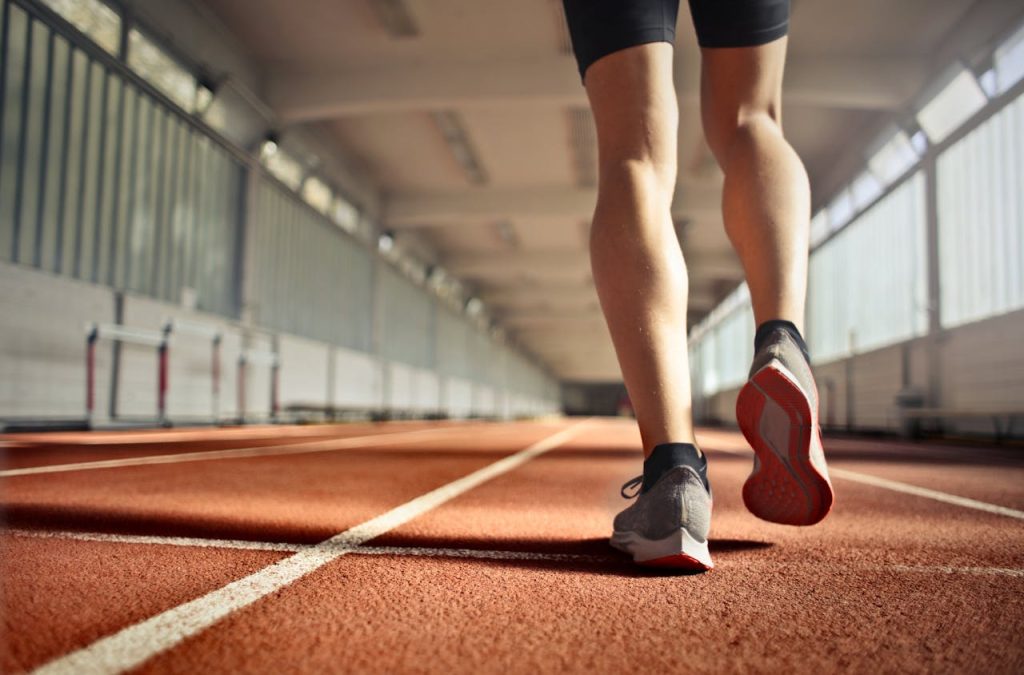
Embarking on a journey to enhance muscle growth, boost athleticism, and increase endurance requires more than just determination. It demands a well-crafted plan that includes a variety of exercises. Let’s dive into three such exercises, each with its own unique twist, designed to challenge your muscles in new and exciting ways.
1. Alternating Jump Lunges
Stand with your feet positioned shoulder-width apart, ensuring your chest is lifted, arms hang naturally at your sides, and your abdominal muscles are engaged to stabilize your core.
Next, take a deep breath in and execute a small hop off the ground. Simultaneously, shift your right leg forward while moving your left leg backward. Upon landing, ensure your right foot is firmly planted on the ground while your left foot rests on the ball of its toes, maintaining stability.
Immediately transition into a lunge position by bending your right knee, allowing your body to descend until your back knee is approximately an inch or two above the floor. Keep your torso upright, and your chest and shoulders aligned with your hips.
Using the strength of your front leg, push through your heel to propel your body upward, executing a controlled jump. While in mid-air, swiftly switch the position of your legs, landing with your left foot forward and your right foot backward.
Once again, sink into a lunge position by bending your left knee, ensuring proper alignment with your front foot. Maintain stability and control throughout the movement.
Continue to alternate between the jump lunge sequence, ensuring a steady and controlled rhythm. Remember to maintain consistent breathing patterns to support your body’s exertion.
It’s important to note that the alternating jump lunge is an intensive exercise that places significant stress on your joints, particularly the knees. Approach the exercise with caution, ensuring proper form and technique at all times to minimize the risk of injury.
For individuals with more advanced fitness levels, consider incorporating additional resistance by holding a dumbbell in front of your torso while performing the exercise, further challenging your muscles and enhancing overall strength and endurance.
2. Skater Hops
Assume your starting stance with feet shoulder-width apart and arms relaxed by your sides. As you take a breath, engage your abdominal muscles.
Begin by bending your right knee and raising your right foot slightly off the ground. Thereafter, with a burst of energy, jump to the right, landing softly on the ball of your right foot while bringing your left leg closer to your right side. Exhale as you land.
Afterwards, take another breath, lift your left leg, and propel yourself to the left, bringing your right leg over to meet your left. Continue this alternating jump motion, moving left and right, for a duration of up to 60 seconds, then pause to rest.
Skater hops are a great introductory exercise suitable for beginners, requiring minimal instruction. To increase the challenge, you can accelerate the pace of your jumps from left to right.
3. Glute Bridge Pulse
Prepare by laying an exercise mat on the floor and lying down on your back. Then, bend your knees, keeping your feet flat on the mat, and place your arms by your sides to aid in balance.
Afterwards, activate your core muscles and take a deep breath. Engage your glutes as you lift your hips upward toward the ceiling. Hold the position briefly at the top, then lower your hips halfway back down.
Pause momentarily before thrusting your hips back up to the top position by contracting your glutes. Continue this pulsing motion, raising and lowering your hips a few inches, for a duration of up to 60 seconds.
The glute bridge pulse is an effective cardio-focused exercise that can be incorporated into your leg day routine. For added challenge, you can target one leg at a time by keeping one foot planted on the floor and extending the other leg straight.
Switch legs to work both sides equally during your workout session. Alternatively, for increased resistance, you can place a dumbbell over your hips while performing the exercise.
4. Pulsing Bodyweight Squats
Stand with your feet positioned hip-width apart, ensuring your toes are angled slightly outward. Initiate the movement by rolling your shoulders back, extending your arms forward, and engaging your abdominal muscles to establish the starting stance. For added challenge, you may opt to hold a dumbbell.
Thereafter, take a deep breath in as you begin to lower your body, descending until your thighs are parallel to the floor. Maintain stability by keeping your heels grounded. Push through your heels to elevate your body several inches, pausing momentarily at the top of the movement.
Descend again until reaching the parallel position, and then extend your knees slightly before repeating the pulsating motion. Continue pulsing up and down, moving several inches each time, until completing the desired number of repetitions.
Pulsing squats are a demanding exercise that can be incorporated into your leg day routine. One effective strategy is to perform them as a finishing exercise.
After completing your regular workout, incorporate several sets of pulsing squats lasting between 30 to 60 seconds each. This will effectively target and exhaust your quadriceps, hamstrings, and glute muscles, providing a satisfying conclusion to your leg-focused training session.
5. Walking Lunges
Assume a tall stance with feet together, shoulders pulled back, eyes forward, and hands resting on hips to begin. Activate your core by engaging your abdominal muscles and take a deep breath.
Afterwards, extend your right leg forward, planting it firmly on the ground. Transition smoothly into a lunge by bending your right knee, lowering your body until your front thigh nears parallel to the floor and your back knee hovers an inch or two above the ground.
Drive through your front heel to rise, bringing your left leg forward to meet the right, exhaling as you stand upright. Inhale as you descend into another lunge, maintaining control and stability. Continue this sequence of lunging, progressively moving forward with each repetition.
Although walking lunges are typically associated with traditional weight training, performing them without added resistance allows for higher repetition counts and effectively engages your cardiovascular system.
6. Jump Squats
Stand with your feet positioned roughly hip-width apart, with your toes angled slightly outward. Roll your shoulders back, engage your core muscles, and take a deep breath to prepare.
Thereafter, initiate the movement by squatting down, pushing your buttocks back while maintaining weight on your heels and toes. Keep your arms extended in front of your body for balance.
Descend until your thighs are parallel to the floor, then push through your heels to rise back up into a standing position. Immediately transition into a vertical jump, propelling yourself upward while driving your arms backward for added momentum.
Make sure to exhale as you reach the peak of your jump, then take another breath as you descend into another squat.Continue this sequence, performing as many repetitions as possible with proper form and control.
For increased resistance, consider holding a light dumbbell during the exercise. Jump squats are a valuable addition to any leg routine, serving as an effective way to target the quadriceps, hamstrings, and glutes.
Similar to pulsing squats, incorporating jump squats as a finishing exercise can help pump up these muscle groups and enhance your overall workout.
7. Box Jumps
Assume your starting position by standing in front of a plyo box or a flat gym bench, ensuring that the elevated object is at a height suitable for jumping over and landing with both feet comfortably.
Position your feet in a stance that feels natural, retract your shoulders, and take a deep breath to prepare. Extend your arms in front of your torso, engaging your core muscles, and taking another breath.
Begin the movement by descending into a half squat position, ensuring that your hips are higher than your knees. Push through your heels to straighten your legs, generating enough power to jump forward and upward.
Thereafter, land softly on top of the box or flat bench, maintaining control and stability. Carefully step off the platform, taking another breath to prepare for the next repetition. Box jumps are an excellent plyometric exercise that not only promotes muscle growth but also aids in lower body power development and cardiovascular improvement.
You can incorporate this movement into your leg routine for a comprehensive workout or pair it with cardio-based activities such as battle ropes or interval running to enhance your training regimen.
8. Alternating Side Lunges
Stand tall with your feet together, legs straight, and arms relaxed at your sides, maintaining an upright posture. Lift your right leg and extend it to the right, firmly planting your foot on the ground.
Thereafter, lower into a squat by bending your right knee, bringing your hands in front of your chest for balance, while keeping your left leg straight.
Continue descending until your right thigh is nearly parallel to the floor, maintaining an upright upper body posture. Make sure to press through your right heel to straighten your right knee, exhaling as you bring your leg back in.
Take another breath and extend your left leg out to the side, descending into another squat while keeping your right leg straight. Repeat this alternating motion, squatting to the left and right, until completing the desired number of repetitions.
For added resistance, you can hold a dumbbell in front of your chest, although it’s recommended to start with the bodyweight version initially.
Performing more repetitions is beneficial for engaging your cardiovascular system and increasing calorie expenditure.
Train All Lower Body Muscles With HIIT Leg Workout
Integrating a variety of exercises into a leg workout with cardio ensures comprehensive muscle development, leaving no stone unturned. The beauty of High-Intensity Interval Training (HIIT) lies in its ability to maximize muscle engagement and foster impressive growth within a condensed time frame.
The hallmark of HIIT is its intense bursts of activity followed by brief recovery periods. Furthermore, understanding the signals your body sends is crucial in avoiding injury and burnout.
Below is a HIIT cardio workout designed to target your lower body muscles. It can be completed in just 15 to 20 minutes, and all you need is an exercise mat. For those with more experience, a light dumbbell can be incorporated for added intensity.
The Exercises:
- Alternating Jump Lunges
- Skater Hops
- Jump Squats
- Alternating Side Lunges
Perform each exercise for a duration of 30 to 45 seconds, allowing yourself to rest for up to 30 seconds between exercises. Upon completing all exercises, take up to a minute to recover fully before starting another round.
Begin with two rounds and progressively increase to five rounds as you build endurance. Each round should not exceed five minutes, allowing you to complete four rounds within a 20-minute timeframe.
This structured approach ensures efficient utilization of time while providing ample opportunity for rest and recovery between rounds. Over time, you can adjust the duration and intensity to suit your fitness level and goals.
What Should You Avoid When Doing a Cardio Leg Workout (Leg Day Errors)?
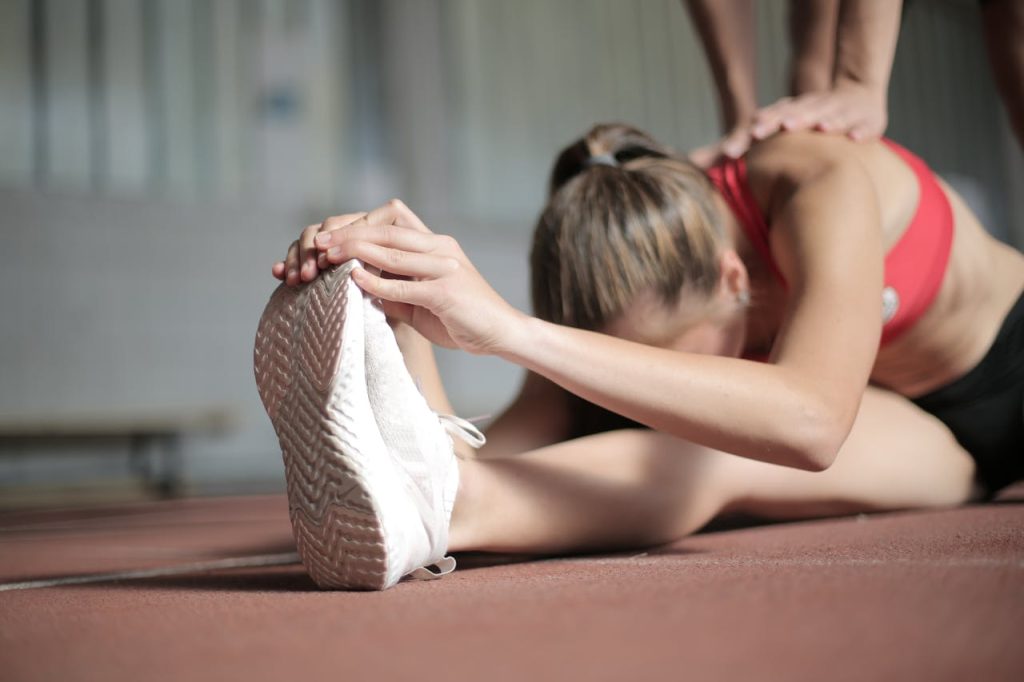
1. Going too Fast
In the quest for fitness, speed is often mistaken for progress. However, when it comes to a cardio leg workout, rushing through exercises can do more harm than good. The goal is to engage your muscles thoroughly, not just to check off a workout on your to-do list.
Ensuring each movement is performed with precision promotes better muscle engagement and reduces the risk of injury.
2. Training at a Low Intensity
Conversely, a workout that’s too easy won’t challenge your muscles enough to induce growth. Finding that intensity sweet spot is essential for progress. Gradually increasing the intensity of your workouts ensures continuous improvement.
3. Only Doing a Couple of Movements
Relying on a limited set of exercises may lead to muscle imbalances and a plateau in progress. Incorporating a range of movements engages different muscles and prevents overuse injuries.
Final Thoughts
The journey toward enhancing your leg strength and endurance doesn’t end with traditional weightlifting or the occasional jog.
Doing leg workout with cardio into your fitness regimen can be a game-changer, offering benefits that go beyond mere muscle growth. This holistic approach to fitness not only challenges but also expands the conventional boundaries of workout methodologies.
Embracing leg and cardio workout means stepping into a broader, more inclusive understanding of what it means to be fit. Also, the principles of combining strength and cardio transcend the gym walls, influencing how you approach physical activity in daily life.
The path to superior leg strength and endurance is clear, but it requires commitment, adaptability, and a willingness to experiment. But are you ready to commit to this journey, and what first steps will you take to embark on this transformative path?
Key Points
- Integrating cardio into leg workouts offers a balanced approach to muscle growth and endurance enhancement.
- High-intensity leg and cardio exercises target multiple muscle groups, promoting adaptability and growth.
- Exercises like alternating jump lunges, skater hops, and glute bridge pulses challenge the body in unique ways, leading to improved strength and agility.
- Incorporating variety, such as box jumps and side lunges, ensures comprehensive lower body development and prevents workout monotony.
- HIIT leg workouts maximize muscle engagement in a short period, making them an efficient choice for those seeking to improve leg muscle mass and cardiovascular health.
- Balancing workout intensity with adequate recovery is crucial to prevent burnout and ensure continuous progress.
- Common leg day errors include rushing exercises, training at too low an intensity, and limiting workouts to only a few movements.
- Cardio exercises on leg day can aid in recovery by improving blood flow and nutrient delivery to muscles.
- Selecting the right type of cardio post-leg day, like low-intensity cycling or walking, can enhance recovery and support muscle growth.
- Cardio exercises involving the legs are essential for overall cardiovascular health and contribute to the strength and endurance of leg muscles.
FAQs
Is Cardio OK on Leg Day?
Yes, incorporating a moderate cardio workout on leg day is not only OK but beneficial. It combines the strengths of both training types, aiding in more efficient recovery. The increased blood flow facilitated by cardio helps nutrients reach your muscles more effectively, supporting muscle repair and growth.
Can You Build Legs with Cardio?
Absolutely. The type and intensity of cardio you perform can significantly impact your leg and glute gains. Sprint training and lower body High-Intensity Interval Training (HIIT) or metabolic conditioning (met-con) are particularly effective. These forms of cardio, combined with proper nutrition, can enhance muscle size and strength in your legs.
What Cardio Is Best After Leg Day?
Post-leg day, opting for low to moderate-intensity cycling can be incredibly effective. It specifically targets leg muscles without overexerting them, promoting endurance and cardiovascular health. Alternatively, walking or light jogging serves as a gentler option, still offering benefits in terms of recovery and cardiovascular fitness.
Is Legs Part of Cardio?
Yes, legs play a crucial role in cardiovascular exercises. Activities that engage the large muscles of the legs, are rhythmic and continuous, and challenge the heart and lungs fall under the umbrella of cardiovascular exercise. These exercises not only improve heart and lung health but also enhance the strength and endurance of the leg muscles.

ABOUT THE AUTHOR
Follow Valen Steven for a dose of fitness enthusiasm, evidence-based advice, and a roadmap to achieving your health and wellness goals.
Subscribe to our Newsletter
Dive into a world of fitness and wellness with our exclusive newsletter! Sign up now and receive weekly power-packs of fitness wisdom

